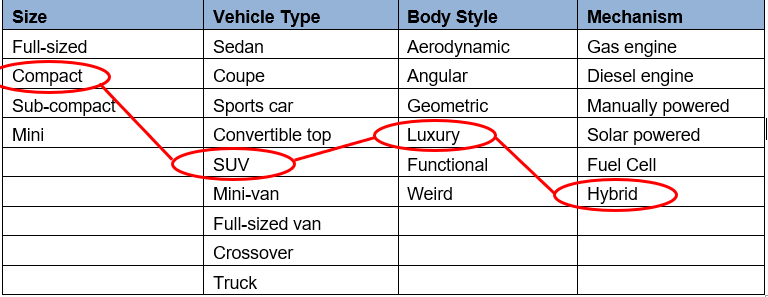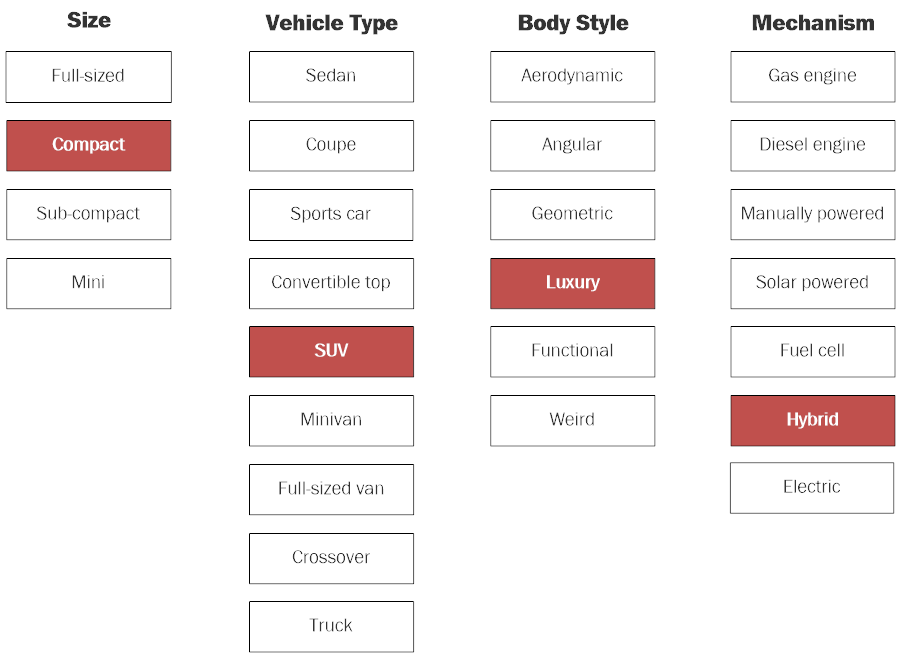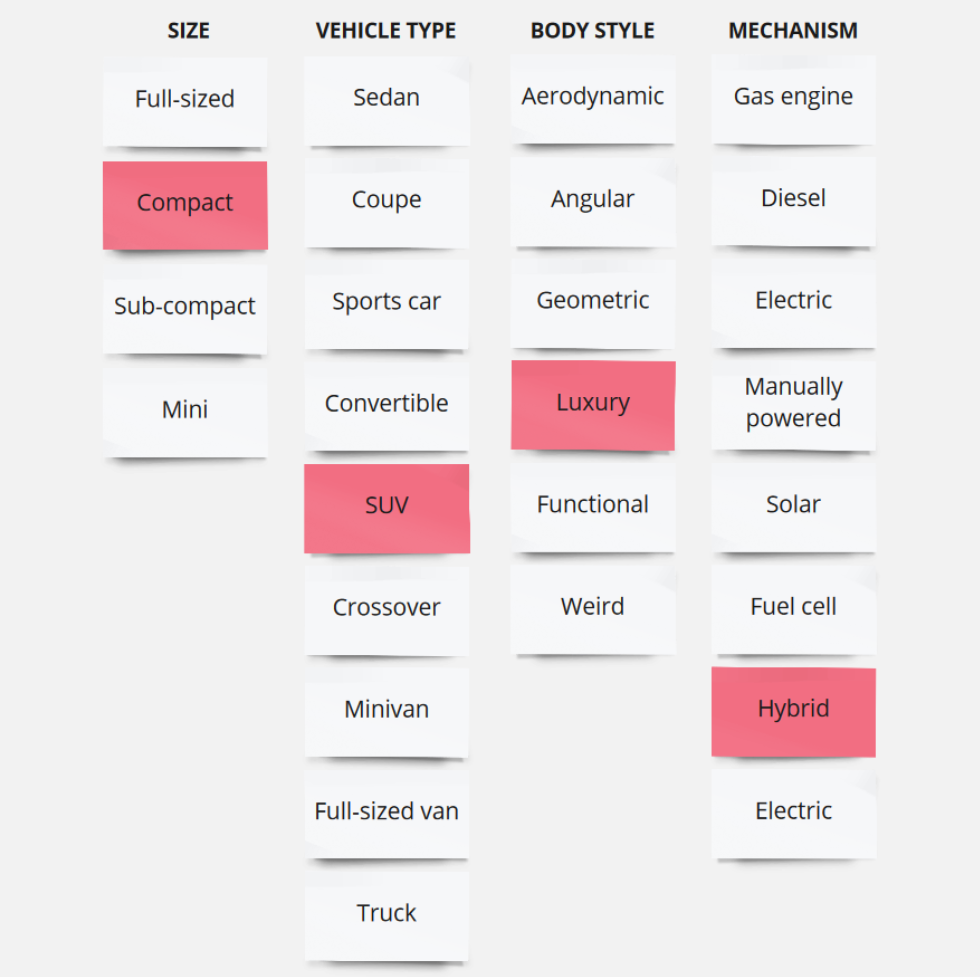
One of the most powerful ways to generate killer ideas is to combine existing ideas and concepts in new ways. One of the best ways to do that in a structured yet creative way is a technique with an obscure, hard to pronounce name: morphological analysis.
While it may sound vaguely scientific and boring, it’s actually a fast-paced and fun creative problem-solving technique. Best of all, you can easily create one to explore new possibilities in a matter of minutes, using a variety of visual thinking tools.
Here’s an example that could be used to develop ideas for a new type of vehicle:
1. Select your primary attributes: Take a spreadsheet and list the attributes or characteristics of the product or item that you want to brainstorm about, one per column at the top of the spreadsheet. For a physical product, for example, this could include characteristics such as size, material, shape and mechanism.
2. List all possible variations: Next, list in the appropriate column the different variations that are possible for that characteristic, one per cell. For example, under material, you would want to list metal, plastic, wood and other materials used to make things. Repeat this process for the remaining characteristics. Try to list as many variations of each attribute as possible. When it comes to morphological analysis, more is definitely better!
3. Start brainstorming! To use this chart for brainstorming, randomly select one item from each column, and be sure to record any combinations that appear to be promising product ideas. For example, randomly picking one attribute from each column of the morphological box on the previous page could result in a compact SUV with a luxury body style, powered by a hybrid engine.
Repeat this random selection process multiple times for best results. This is a powerful way to explore a large number of possible variations and combinations quickly and easily. Plus, it’s fun!
How to create a morphological analysis table
The easiest way to create a table for this brainstorming technique is to set it up in Excel table cells. It enables you to easily create headers, rows and columns.
If you want to get a bit more creative, however, you can also build one using popular visual thinking tools. Here are three variations that I built, using MindManager (a mind map formatted in an org chart model), SmartDraw 2020 (diagramming) and Miro (a visual note-based collaboration tool). Using all three of these tools, I was able to build a matrix in 30 minutes or less.
Here are my examples:
MindManager 21





Leave a Reply